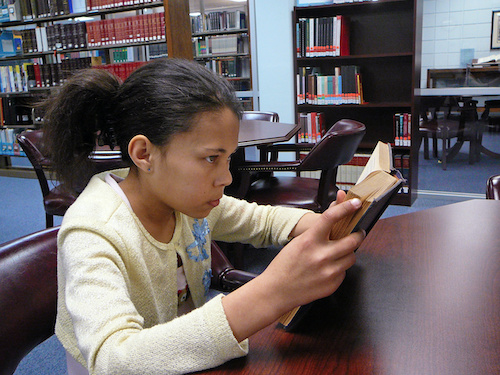Since my first day of teaching middle school, the “science of reading” — tying reading proficiency to explicit phonics instruction in addition to comprehension work—became a catchphrase for Facebook groups, professional development, and curricula. Lucy Calkins revised her popular but widely criticized “Units of Study” curriculum to include phonics-focused lessons. “Sold a Story,” a podcast series investigating reading instruction, became one of the top podcasts of the year. I also got trained in Wilson Reading Systems, an Orton-Gillingham and multisensory approach to teaching the basic phonics instruction many of my middle school students never received.
In my experience, conversations about the science of reading are happening primarily with elementary and early childhood educators. Those conversations are preventing further literacy injustice and disenfranchisement. But how are we addressing the ways that the system has failed our secondary students when they first learned to read? How can I, a middle school ELA teacher, support the students in my class who were passed along without receiving the literacy instruction they needed?
I am worried that secondary students and secondary education as a whole are being left out of the conversation on how children learn to read. It’s wonderful that (finally!) we are getting to the root of the issue, but what about the young people for whom Tier I instruction comes too late? What about students who, from here on out, will need intensive intervention in order to get on grade level?
My former sixth graders are in high school now, preparing for college and careers, but the best preparation they can get is one that helps them, once and for all, become fluent readers. I am concerned that among the excitement of elementary curriculum overhauls, we will leave the children who’ve been wronged even further behind. I am afraid that we’ll do to them what this country has done to people who struggle with literacy since its inception: disenfranchise, hide, and erase.
During that first year of teaching middle school, when I was shocked by the students in my class that struggled to sound out single-syllable words, who guessed based on the first two letters rather than sound out, and who, upon hearing they’d do partner reading, developed looks of panic in their eyes, I found hope in literacy intervention programs targeting adolescents who lacked key skills.
I want more for these students. I want every secondary educator to be trained in not just teaching kids about reading; I want them to be trained to teach their students to read, should one or two or 10 sit down in the back of their class and not know how.
I believe in the power of restorative literacy. Every day, I work with adolescents and pre-adolescents who have slipped through the massive cracks of our education system. What I have witnessed during my five years working in vastly different types of schools is that learning, achievement, and opportunity gaps either dramatically widen or dramatically close in middle school. Passion for social justice within our education systems is insufficient; the actual work — the literacy work — that makes change possible needs to occur.
Chalkbeat is a nonprofit news site covering educational change in public schools.
Related:
How to improve literacy through the science of reading
4 keys to teaching the science of reading in a virtual setting
- Are substitutes the answer to the teacher shortage? - June 13, 2023
- Preparing for ransomware attacks begins with education - June 13, 2023
- How to use UDL-inspired technology to reengage students - June 12, 2023

